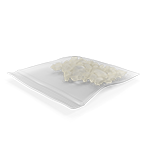
Meth
Methamphetamine (also called meth, crystal, chalk, and ice, among other terms) is an extremely addictive stimulant drug that is chemically similar to amphetamine. It takes the form of a white, odorless, bitter-tasting crystalline powder.
Methamphetamine is taken orally, smoked, snorted, or dissolved in water or alcohol and injected. Smoking or injecting the drug delivers it very quickly to the brain, where it produces an immediate, intense euphoria. Because the pleasure also fades quickly, users often take repeated doses, in a “binge and crash” pattern.
Protecting Our Youth From Meth
Methamphetamine is an addictive stimulant drug for youth (and adults). Stimulants are a class of drugs that can boost mood, increase feelings of well-being, increase energy, and make individuals more alert. But they also have dangerous effects like raising heart rate and blood pressure, and use can lead to addiction.
Because continued use of the drug decreases natural feelings of hunger, users can experience extreme weight loss. Negative effects can also include disturbed sleep patterns, hyperactivity, nausea, delusions of power, increased aggressiveness and irritability.
Other serious effects can include insomnia, confusion, hallucinations, anxiety and paranoia. In some cases, use can cause convulsions that lead to death.
Learn about how you can start having conversations with your children today on the dangers associated with methamphetamine use.

Barry County SATF works in conjunction with the Barry County Police and the Michigan Department of Community Health to locally implement the Michigan Meth Watch program, a collaborative initiative that began in 1997 to reduce methamphetamine lab activity by making the theft or purchase of precursor products (or the ingredients used to make meth) more difficult.
Meth is an addictive drug that is frequently made in illegal "labs" that are often set up in homes, garages, and even wooded areas. Its manufacture gives off an odor similar to nail polish remover or cat urine. Other possible signs of a lab are large amounts of cold medication, drain cleaner, lantern fuel, coffee filters, batteries and/or antifreeze. As a result of meth production, these labs leave behind a great deal of toxic waste. For each pound of methamphetamine produced, five to six pounds of toxic waste is created. This waste poses long term hazards and can be present in soil and groundwater for years.
If people suspect a meth lab or see components of meth the can call 911 or the Meth Tip Line at 1-866-Meth-Tip (1-866-638-4847).


